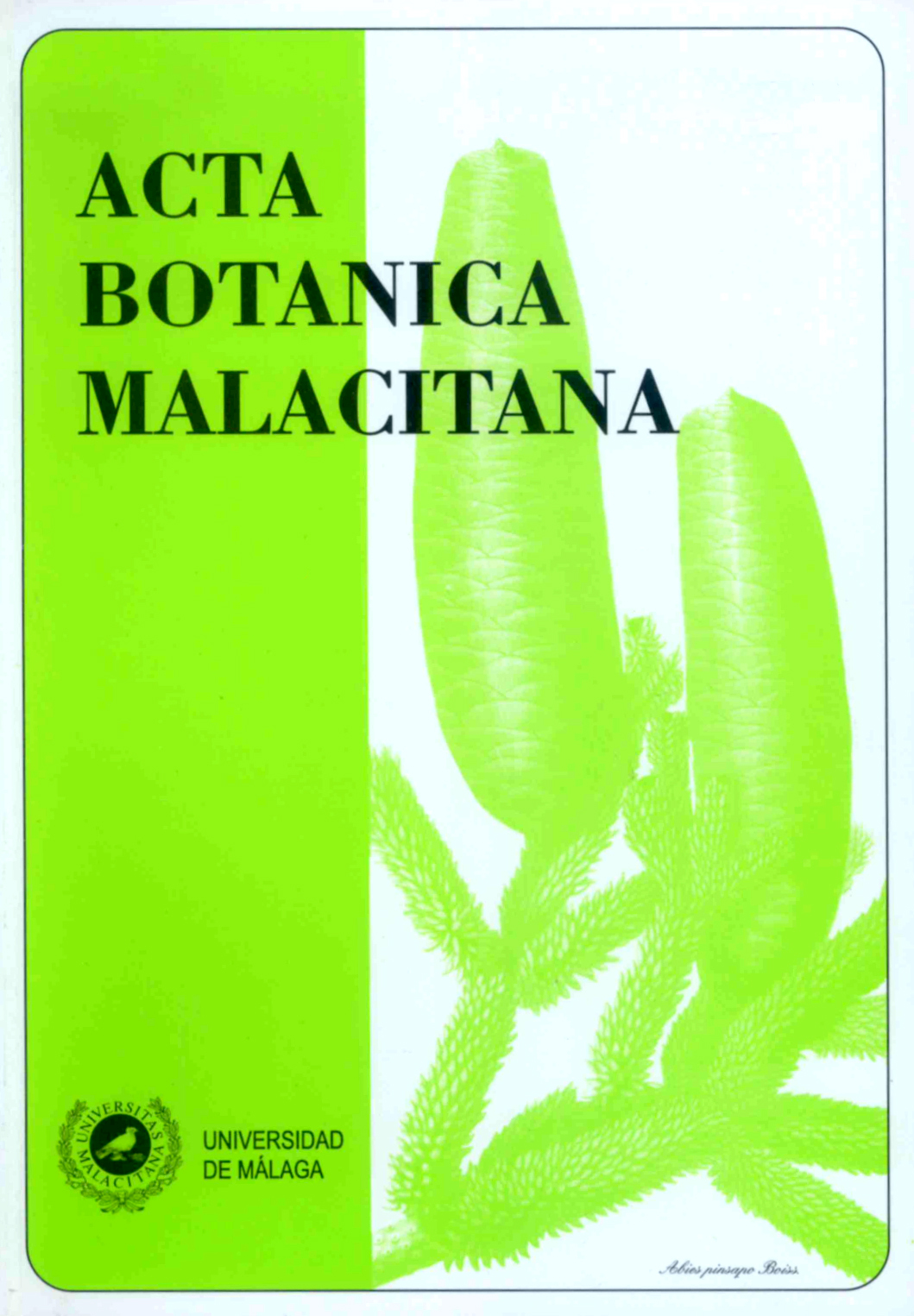Contribución al estudio polínico de especies ornamentales de San Miguel de Tucumán (Tucumán, Argentina). Pollen morphology of ornamental species from San Miguel de Tucumán (Tucumán, Argentina).
DOI:
https://doi.org/10.24310/abm.v41i0.2457Abstract
Español. San Miguel de Tucumán posee vegetación ornamental de carácter exótico y autóctono distribuída en calles y plazas. Con el objeto de facilitar la identificación de los granos de polen presentes tanto en sedimentos melíferos como en muestreos aerobiológicos locales, el presente trabajo continúa la descripción de la morfología polínica de la flora ornamental de esta ciudad. Se analizaron 10 especies arbóreas y arbustivas: Brachychiton populneus (Schott & Endl.) R. Br. (Malvaceae); Caesalpinia gilliesii (Wall. ex Hook.) D. Dietr. (Fabaceae); Campsis radicans (L) Bureau (Bignoniaceae); Euphorbia milii Des Moul. (Euphorbiaceae); Hibiscus rosa-sinensis L.; H. rosa-sinensis L. var. schizopetalus Boulger, H. mutabilis L., (Malvaceae); Hydrangea macrophylla (Thunb.) Ser. (Hydrangeaceae); Jacaranda mimosifolia D. Don (Bignoniaceae) y Ligustrum lucidum W.T. Aiton (Oleaceae). Las muestras provienen de material fresco y fueron procesadas según las técnicas convencionales de acetólisis y polen natural. Las preparaciones microscópicas fueron incorporadas a la Palinoteca (PAL-TUC) de la Fundación Miguel Lillo (FML). Se tomaron fotos con MO y MEB. Las descripciones polínicas amplían estudios previos realizados por diversos autores excepto en Hydrangea macrophylla y Jacaranda mimosifolia, de los que no encontramos referencias sobre morfología polínica en trabajos anteriores. De las especies estudiadas Ligustrum lucidum ha sido registrado en muestreos aerobiológicos. Brachychiton populneus, Hibiscus rosa-sinensis, Hibiscus rosa-sinensis var. schizopetalus y Euphorbia milii se han encontrado en muestras melisopalinológicas.
Inglés. San Miguel de Tucumán has ornamental vegetation of exotic and indigenous character distributed in streets and squares. In order to facilitate identification of pollen grains present in melliferous sediments and aerobiological sampling, this study continues the description of the pollen morphology of the ornamental flora of this city. For the study, 10 arboreal and shrubby species were analyzed: Brachychiton populneus (Schott & Endl.) R. Br. (Malvaceae); Caesalpinia gilliesii (Wall. ex Hook.) D. Dietr. (Fabaceae); Campsis radicans (L) Bureau (Bignoniaceae); Euphorbia milii Des Moul. (Euphorbiaceae); Hibiscus rosa-sinensis L., H. rosa-sinensis L. var. schizopetalus Boulger, H. mutabilis L., (Malvaceae); Hydrangea macrophylla (Thunb.) Ser. (Hydrangeaceae); Jacaranda mimosifolia D. Don (Bignoniaceae); Ligustrum lucidum W.T. Aiton (Oleaceae). Samples obtained from fresh material were processed by conventional techniques of acetolysis and natural pollen. The microscopic preparations were incorporated into the Palinoteca (PAL-TUC) of the Fundación Miguel Lillo (FML). Pictures were taken with OM (optical microscope) and SEM (Scanning Electron Microscope). The pollen descriptions of this work extend previous studies made by various authors except in Hydrangea macrophylla and Jacaranda mimosifolia, of which no references on pollen morphology were found in previous works. Among the species studied, Ligustrum lucidum, was found in aero biological samples; whereas Brachychiton populneus, Hibiscus rosa-sinensis, H. rosa-sinensis. var. schizopetalus and Euphorbia milii were found in melisopalinological samples.
Downloads
Metrics
Downloads
Published
How to Cite
Issue
Section
License
Those authors who publish in this journal accept the following terms:
a. The authors will retain their copyrights and guarantee the journal the right of first publication of their work, which will be simultaneously subject to the Creative Commons Attribution-Non-commercial 4.0 license whose full text can be found at <http: // creative commons .org / licenses / by-nc / 4.0> that allows third parties to share the work as long as its author and its first publication are indicated, and as long as it is not for commercial purposes.
b. Authors may adopt other non-exclusive licensing agreements for the distribution of the version of the published paper (e.g., deposit it in an institutional telematic file or publish it in a monographic volume) provided that the initial publication in this journal be indicated.
c. Authors are allowed and recommended to disseminate their work through the Internet (e.g., in institutional telematic archives or on their websites) before and during the submission process, which can produce interesting exchanges and increase citations of the published work. (See The effect of open access)







1.png)
